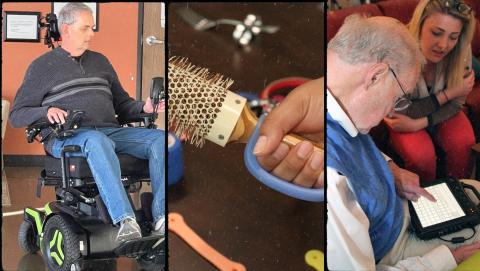“Over the last decade, technology has been developed that allows people to preserve speech or speak through machines, and the latest advances in ALS are so-called brain-computer interfaces, or BCI devices,” Dr Dave said.This technology records brain signals and then translates or decodes those brain signals, allowing people who cannot move to control objects in their environment using their mind.
“So someone who can’t speak can now speak by thinking, and type by thinking. In the 10 years since the Ice Bucket Challenge, this field of brain-computer interfaces has transformed and is really at the cutting edge of technology,” he said.
Another technology that has gained increased popularity over the past five years, says Dr Dave, is adjustable wheelchair seat height. When you meet someone in a wheelchair, they’re usually sitting low and, like most people, they want the opportunity to make eye contact.
“Technology has improved and now we can raise the seat of a wheelchair. This change allows us to not only talk to him at eye level, but also open refrigerators and cupboards that we couldn’t do before. These are types of technologies that don’t usually get a lot of attention, but are so important in managing ALS.”

